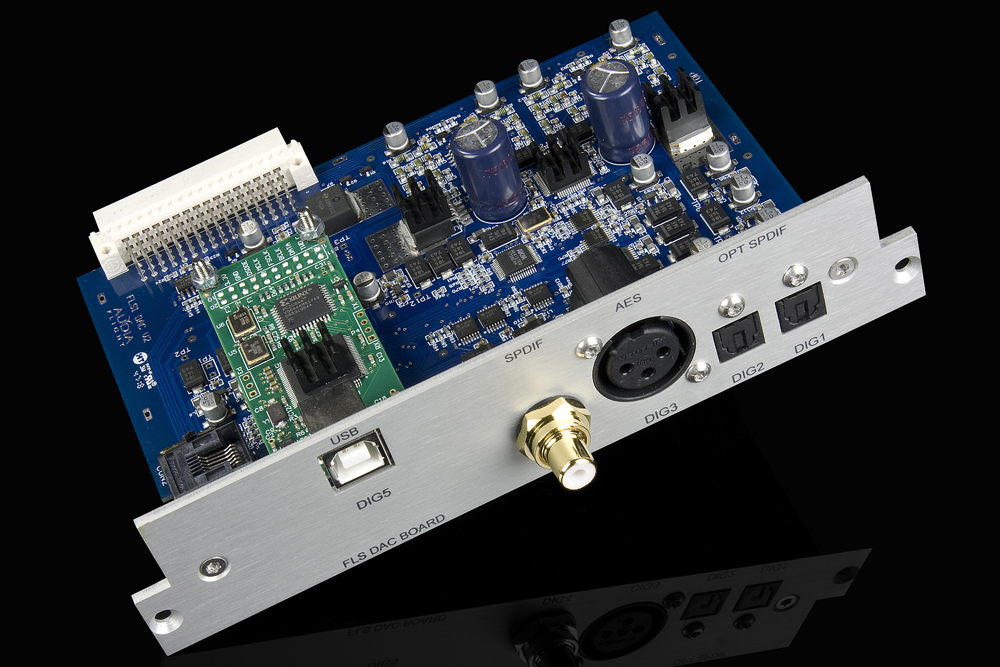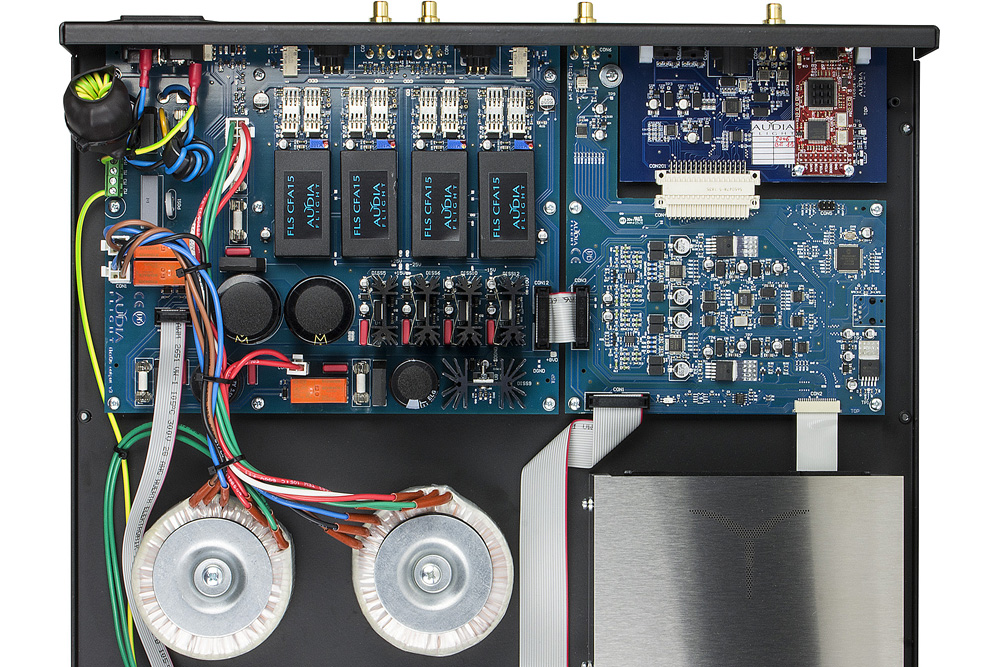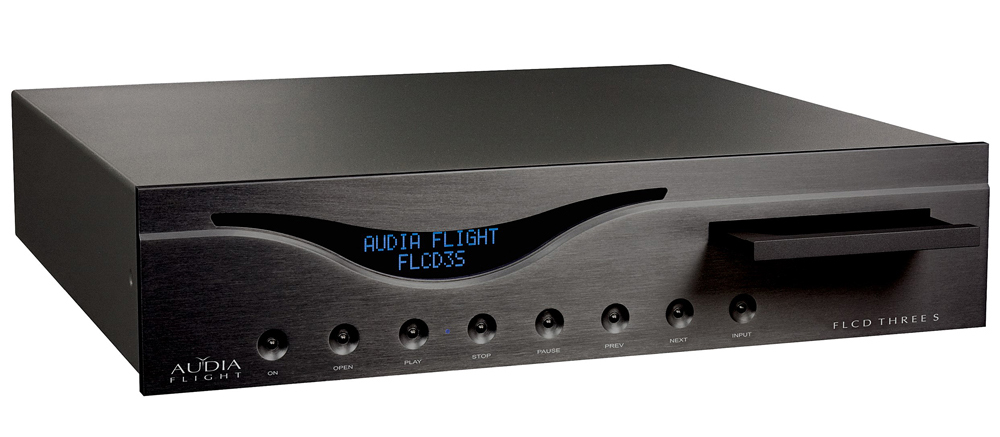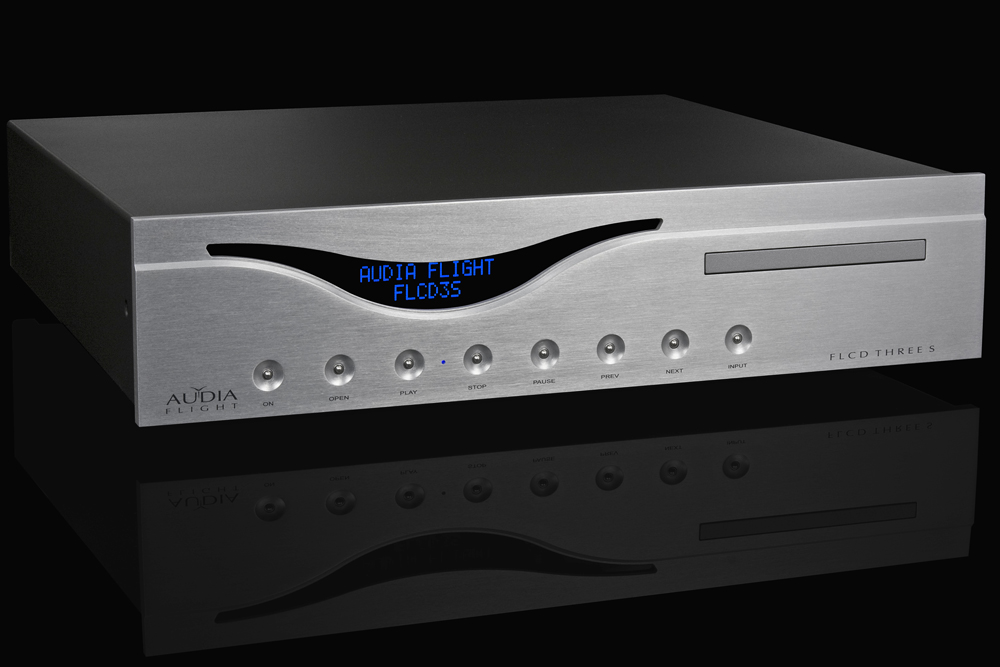A Swiss Army Knife inside a Pandora's Box. We reviewers do so love our metaphors and I've brewed-up a doozy in that previous sentence. It's about as mixed as they get and yet, it's what sums up this interesting player from the Italian audio house of Audia Flight. Features abound and it truly is a “jack of all trades”. CD player? Yep. DAC? Yep. Transport? Of course. USB DAC? We have you covered Sir. Oh? Your system is balanced you say? Not a problem Sir. We have balanced outputs along with our five (yes five) different digital inputs and high-resolution playback. Sir doesn't use a preamplifier? We anticipated that and there's remote volume (in the digital domain naturally).
More questions? No? Didn't think so…
All frivolity aside, this player can be a little overwhelming at first. Even for this reviewer, who loves anything with buttons and menus. It's just so capable in so many disciplines. Almost future proof they claim. Upon closer inspection though, it's really not too daunting. It's actually rather welcoming, offering up what appears as a big wide smile from the sculpted 10mm alloy fascia, with its gorgeous machined curves. The remote is equally handsome and is machined from a block of solid anodised aluminium and it has some gravity to it. The buttons, although small, are protruding therefore easy to find by touch. Along with the blue OLED array in amongst the alloy waves on the front, there's eight buttons for the basic controls as well as a standby button. The main on/off is on the rear next to the mains input. The chassis feet are bespoke units composed of three wafer layers of specific vibration rejection material. Weight is a respectable 10kg.
The FL CD Three S uses a CD Drive, but it's optimised in-house for this application and isn't just your average computer CD Drive. DACs are the AKM4493EQ 32-Bit with “velvet sound technology”. One per channel, along with a choice of six (yes six!) Digital Filters. One is a modernised version of the well-known Audia Flight filter in the original Flight CD1. The discreet Class-A output section uses Current Feedback Technology. There are balanced XLR and single-ended RCA analogue outputs.
The digital optional input module features S/PDIF coaxial RCA, AES/EBU via XLR, two Toslink optical and USB inputs. The USB input is capable of 32-Bit/384kHz and DSD512 resolution while the other input options offer upsampled 32-Bit/768kHz optionally.

Dual toroidal transformers are employed, one each for the digital and analogue circuits along with extensive shielding and isolation technologies. Unusually, the output section of the DAC is supplied from the analogue power supply.
So, state of the art playback technology and options – Check. Aesthetically pleasing Italian design – Check. Upgradeability for future options – Check. Compatibility with modern digital formats – Check. Now for sound quality.
Smiley Face
Upon first playing the Audia Flight FL CD Three S, it became very obvious that it needed some break-in. A quick message to the distributor in Melbourne received the answer that “It'll need 50-60 hours before you'll be able to listen”. So that's just what was done. Out came the burn-in and test track albums. These were all rotated through repeatedly over the course of the next 10 days. Eventually this was completed (thanks neighbours) and some discs were cued up and notepad readied. All listening in this session described is via Redbook CD. This reviewer has neither the available time nor inclination to delve into streaming/multiple format playback. A huge collection of Redbook gives endless satisfaction along with high quality sound reproduction and (enough) convenience.
A couple of quick comments regarding the listening session. The FL CD Three S has the aforementioned six filters available to tailor the sound as required. These each add their own flavour, but are not available on the fly. Instead, the track must be stopped and the filter programmed via the selection menu for that particular input. This allows individual choice of filter based on the input in use but, when trying to compare filters on one particular track, it's somewhat cumbersome. Hence I'll give a broad description of what was heard on the six filters later in the review.
Secondly, the FL CD Three S had some problems with some of the CD-Rs I presented to it. It would either refuse to read the TOC (Table of Contents) or it would only play the first couple of tracks on the album. These were CD-Rs that I had played many times via various players. Yet some other CD-Rs actually played perfectly…

A fellow reviewer recently turned me on to The Embassadors album Coptic Dub. This is a 2007 to 2009 compilation from New York Acoustic Studios and is produced by Hayden Chisholm and Burnt Friedman (great name!). Interestingly, each track is recorded with “one take only” in a state of “super concentration”. The result is varied, raw, beautiful and in some cases amazing. What stood out for this reviewer was the dense and complex layering of sounds, particularly in Track 6 “Albino Maori Dub”.
While a diametric departure from the Jazz camp of The Ambassadors’ previous productions, this is a fascinating change and one that gave the MartinLogan Monoliths a real workout in the bass department. Track 4 “Dagaz Eterna” displayed the bongo drums bounce and “boing” very well indeed. The Audia Flight FL CD Three S was able to resolve the information in the passages and produce it in a way at once both musically and technically revealing. Bass notes had definition and body, albeit not quite plumbing the depths I know the Monoliths to be capable of, at least on this track. Again on Track 6, the wind instruments displayed a slight “glassiness” at the end of notes where the breath was audible. The low bass was deep, but also slightly reverberant, more so than was natural in this reviewer's opinion. However, the upper and mid bass had plenty of snap and bite. On Track 7 “Desdemona Breathes”, mid and high frequency decay in notes was presented naturally and convincingly. There was a seductive shimmer to high frequency instruments such as shaker and tambourine. Bass reproduction was again a little soft for this reviewer but nevertheless not much was left out.
Dire Straits is simply de rigueur in the case of a new CD spinner review. Love Over Gold from Phonogram’s 1982 version was cued up and ready to fire. Volume was judiciously increased, as this is not a mellow album and, in this reviewer's opinion, it sounds much better at higher levels. Of course Track 2. “Private Investigations” is the go-to on this album and there was little to dislike from the FL CD Three S. The crazy dynamic range and impact of this track was prominent and particularly enjoyable. The incoming drum hits from legendary drummer Pick Withers possibly lacked the last touch of depth, but the notes themselves were well fleshed out and tuneful. Track 3, “Industrial Disease” had the toe-tapping pace and rhythm that is its trademark. Knopfler’s vocals were clear and intelligible, right down to the last breathless growl. On the title track, the presentation was familiar and enjoyable, if possibly somewhat smeared on the lowest, quietest sounds… Nothing “bad”, as such, and certainly this reviewer could be accused of being picky.

I love listening to XRCD extended resolution recordings. Spirit Traveller’s Playing the Hits from the Motor City on JVC’s amazing K2 20-bit Super Coding is as fine an example of this as I've come across. The tracks are all familiar old favourites, offering “Clearer Definition, more accurate imaging and higher audio quality than ever before”. XRCD is promoted as 20-bit, 128 times oversampling with a dynamic range of 108dB (!), -96dB THD, flat frequency response in the passband to within +0.05dB and a substantial reduction in harmonic distortion for low level signals.
Spirit Traveller is actually a ‘Super Group’ that formed in 1993 for the recording of this, their only project. Four celebrated guitarists of their era in Eric Gale, Phil Upchurch, David T Walker and Wah Wah Watson joined up with drummer James Gadson and bassist James Jameson Jr. to present these renditions of Detroit-themed classic tunes. Track 1 “Signed, Sealed, Delivered I'm Yours” rises and falls with beautiful sweeps. The FL CD Three S was able to capture this perfectly and did not give way to that common “one-level-ness” that plagues so many spinners these days. Track 8 “Ain’t no Mountain High Enough” should be familiar to almost anyone with ears. The presentation here was very good. Raw, soulful, soaring and emotional is what my listening notes say. The balance of the album was presented equally well by the Audia Flight and in fact, it's the album I came back to most often when examining the differences the six separate digital filters made to the sound.
Now, whether these filters are a feature, a tool or just a gimmick is not for this reviewer to judge. They can only be activated with the track stopped, as mentioned before, but once familiar with the process the listener should have no problem swapping between them. Filter 1 is the default setting upon power-up and was actually my preferred setting after much experimentation. Filter 2 provided a ‘fleshing-out’, or warmth, to the midrange presentation but at the expense of definition in that area. Filters 3, 4 and 5 were almost indistinguishable from one another, especially without the luxury of instant A/B comparison. They each feature slightly different roll-off slopes and delay speeds. Filter 6 was my next favourite following Filter 1. Number 6 offered “low dispersion, short echo and original sound” according to the manual. I found it a slightly warmer version of Filter 1 but it retained enough detail and nuance to hold my attention.
The list of features and functions, permutations and adjustments available on the Audia Flight FL CD Three S are worthy of their own review, such is the complexity and choice on offer here. While renaming of every input and output, including the balanced outputs, is a feature, as far as the filters, each input can be assigned its own particular PCM filter, as well as Dither setting. For those with the inclination, the full 20 page user manual is available for your delectation.
It should be noted here that listening was performed with both solid state amplification via Musical Fidelity's excellent M6i amplifier, with the valve amplification duties given over to the enormous EAR549 Monoblocks that have remained a staple performer over the last few years. The Solid State was definitely better suited to the Audia Flight. The EAR549s are enormously powerful and capable, but their character was just too mellow to suit the FL CD Three S.
My task here has been somewhat easy but in other ways not so. Coming from an ‘old school’ perspective to audio reproduction can be both a blessing and a curse. While the involvement it affords gives (I believe) a more experienced evaluation of sound quality and performance, it also precludes the ultimate knowledge of all the formats available today. Are those formats better in terms of sound quality? Time will tell. Are they easier and more convenient? In many cases, yes they are. The reviewer’s job is not to pass judgment on these questions. The market and end user will provide these answers. The reviewer’s job is to review what is provided.

The Audia Flight FL CD Three S is a technological tour de force in many ways, offering as it does the source foundation for your entire system. It's also quirky and at times, downright frustratingly complex. But once you get to know it, it's also a very musical and intimate performer with the right material. If I could draw the following analogy – I once worked on Ferrari motor cars specifically installing the first versions of in-car telephones in the 1980s. The wiring on Ferrari's of that period had “character”. It was rarely accurately related to the diagram provided by the factory or indeed to the colour code on the fuse box plaque. But, it worked beautifully and rarely failed. Attention to detail from the Italian technicians was exemplary and pride of workmanship was visible wherever you looked. It's just that it required an “adjustment of perspective” if you were going to become involved with it. Likewise with the Audia Flight FL CD Three S, whose operation logic and procedure is unlike most other players.
Conclusion
The Audia Flight FL CD Three S is a fascinating product and one deserving of consideration as a standalone quality music source, as well as integration into an existing system as an upgrade or adjunct for its digital versatility. Given its ability to accept multiple digital inputs, along with excellent Redbook CD reproduction, the FL CD Three S can claim a place as the digital heart of any high-end ensemble.
I don't know if Pandora's Box ever contained a Swiss Army Knife, but if it didn't, the FL CD Three S is testament that it should have.
… Scott Campbell
www.soundstageaustralia.com
Associated Equipment
- Speakers — MartinLogan Monolith, Whise Profunda
- Amplifier — Musical Fidelity M6i, EAR549 monoblocks
- Preamplifier — Lightspeed Attenuator
- Source — Linn CD12
- Cables – AJH Alice, Goertz, Mark Levinson Madrigal
Audia Flight FL CD Three S CD Player
Price: AU$4300 standard, AU$4900 with digital module
Warranty: Two Years (12 months on laser)
Australian Distributor: Absolute Hi End
+61 488 777 999
www.absolutehiend.com
Audia Flight
Via Alfio Flores, 7
00053 Civitavecchia (RM)
+39 0766 561403
www.audia.it











